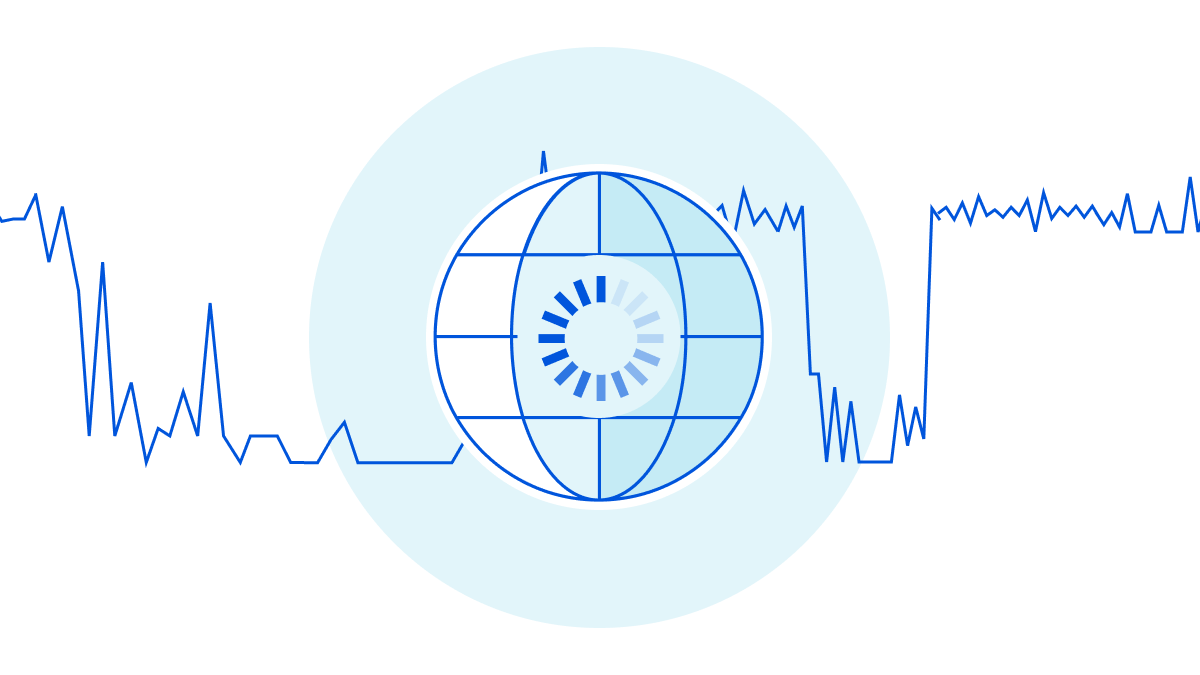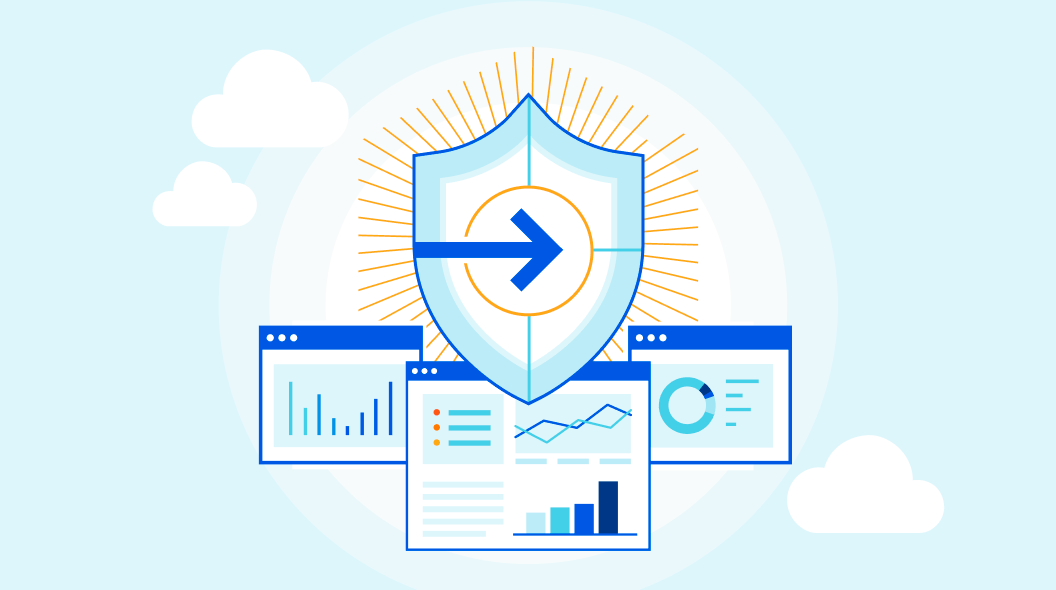Protecting election groups during the 2022 US midterm elections


On Tuesday, November 8, 2022, constituents cast their ballots for the 2022 US midterm elections, which included races for all 435 seats in the House of Representatives, 35 of the 100 seats in the Senate, and many gubernatorial races in states including Florida, Michigan, and Pennsylvania. Preparing for elections is a giant task, and states and localities have their work cut out for them with corralling poll workers, setting up polling places, and managing the physical security of ballots and voting machines.
We at Cloudflare are proud to be able to play a role in helping safeguard the integrity of the electoral process. Through our Impact programs, we provide cyber security products to help protect access to authoritative voting information and the security of sensitive voter data.
We have reported on our work in the election space with the Athenian Project, dedicated to protecting state and local governments that run elections; Cloudflare for Campaigns, a project with a suite of Cloudflare products to secure political campaigns’ and state parties’ websites and internal teams; and Project Galileo, in which we have helped voting rights organizations and election results sites stay online during traffic spikes.
How the Brazilian Presidential elections affected Internet traffic
Brasil, sei lá
Ou o meu coração se engana
Ou uma terra igual não há
— From Tom Jobim’s song, Brasil Nativo

Brazil’s recent presidential election got significant attention from both global and national media outlets, not only because of the size of the country, but also because of premature allegations of electoral fraud. The first round of the Brazilian 2022 general election was held on October 2, and the runoff was held on Sunday, October 30. With 124 million votes counted, former president Lula da Silva (2003-2010) won with 50.9% of the votes, beating incumbent Jair Bolsonaro, who had 49.1% of the votes.

Using Cloudflare’s data, we can explore the impact that this election had on Internet traffic patterns in Brazil, as well as interest in content from election-related websites, news organizations, social media platforms, and video platforms.
Here are a few highlights: while the runoff generated much more interest to election related websites (we actually have a view to DNS queries, a proxy to websites), the first round showed bigger increases in traffic Continue reading
Cloudflare is not affected by the OpenSSL vulnerabilities CVE-2022-3602 and CVE-2022-3786


Yesterday, November 1, 2022, OpenSSL released version 3.0.7 to patch CVE-2022-3602 and CVE-2022-3786, two HIGH risk vulnerabilities in the OpenSSL 3.0.x cryptographic library. Cloudflare is not affected by these vulnerabilities because we use BoringSSL in our products.
These vulnerabilities are memory corruption issues, in which attackers may be able to execute arbitrary code on a victim’s machine. CVE-2022-3602 was initially announced as a CRITICAL severity vulnerability, but it was downgraded to HIGH because it was deemed difficult to exploit with remote code execution (RCE). Unlike previous situations where users of OpenSSL were almost universally vulnerable, software that is using other versions of OpenSSL (like 1.1.1) are not vulnerable to this attack.
How do these issues affect clients and servers?
These vulnerabilities reside in the code responsible for X.509 certificate verification - most often executed on the client side to authenticate the server and the certificate presented. In order to be impacted by this vulnerability the victim (client or server) needs a few conditions to be true:
- A malicious certificate needs to be signed by a Certificate Authority that the victim trusts.
- The victim needs to validate the malicious certificate or ignore a Continue reading
Privacy Gateway: a privacy preserving proxy built on Internet standards


If you’re running a privacy-oriented application or service on the Internet, your options to provably protect users’ privacy are limited. You can minimize logs and data collection but even then, at a network level, every HTTP request needs to come from somewhere. Information generated by HTTP requests, like users’ IP addresses and TLS fingerprints, can be sensitive especially when combined with application data.
Meaningful improvements to your users’ privacy require a change in how HTTP requests are sent from client devices to the server that runs your application logic. This was the motivation for Privacy Gateway: a service that relays encrypted HTTP requests and responses between a client and application server. With Privacy Gateway, Cloudflare knows where the request is coming from, but not what it contains, and applications can see what the request contains, but not where it comes from. Neither Cloudflare nor the application server has the full picture, improving end-user privacy.
We recently deployed Privacy Gateway for Flo Health Inc., a leading female health app, for the launch of their Anonymous Mode. With Privacy Gateway in place, all request data for Anonymous Mode users is encrypted between the app user and Flo, which prevents Flo Continue reading
Stronger than a promise: proving Oblivious HTTP privacy properties


We recently announced Privacy Gateway, a fully managed, scalable, and performant Oblivious HTTP (OHTTP) relay. Conceptually, OHTTP is a simple protocol: end-to-end encrypted requests and responses are forwarded between client and server through a relay, decoupling who from what was sent. This is a common pattern, as evidenced by deployed technologies like Oblivious DoH and Apple Private Relay. Nevertheless, OHTTP is still new, and as a new protocol it’s imperative that we analyze the protocol carefully.
To that end, we conducted a formal, computer-aided security analysis to complement the ongoing standardization process and deployment of this protocol. In this post, we describe this analysis in more depth, digging deeper into the cryptographic details of the protocol and the model we developed to analyze it. If you’re already familiar with the OHTTP protocol, feel free to skip ahead to the analysis to dive right in. Otherwise, let’s first review what OHTTP sets out to achieve and how the protocol is designed to meet those goals.
Decoupling who from what was sent
OHTTP is a protocol that combines public key encryption with a proxy to separate the contents of an HTTP request (and response) from the sender of an HTTP request. Continue reading
Partial Cloudflare outage on October 25, 2022


Today, a change to our Tiered Cache system caused some requests to fail for users with status code 530. The impact lasted for almost six hours in total. We estimate that about 5% of all requests failed at peak. Because of the complexity of our system and a blind spot in our tests, we did not spot this when the change was released to our test environment.
The failures were caused by side effects of how we handle cacheable requests across locations. At first glance, the errors looked like they were caused by a different system that had started a release some time before. It took our teams a number of tries to identify exactly what was causing the problems. Once identified we expedited a rollback which completed in 87 minutes.
We’re sorry, and we’re taking steps to make sure this does not happen again.
Background
One of Cloudflare’s products is our Content Delivery Network, or CDN. This is used to cache assets for websites globally. However, a data center is not guaranteed to have an asset cached. It could be new, expired, or has been purged. If that happens, and a user requests that asset, our CDN needs Continue reading
Email Routing leaves Beta


Email Routing was announced during Birthday Week in 2021 and has been available for free to every Cloudflare customer since early this year. When we launched in beta, we set out to make a difference and provide the most uncomplicated, more powerful email forwarding service on the Internet for all our customers, for free.
We feel we've met and surpassed our goals for the first year. Cloudflare Email Routing is now one of our most popular features and a top leading email provider. We are processing email traffic for more than 550,000 inboxes and forwarding an average of two million messages daily, and still growing month to month.
In February, we also announced that we were acquiring Area1. Merging their team, products, and know-how with Cloudflare was a significant step in strengthening our Email Security capabilities.
All this is good, but what about more features, you ask?
The team has been working hard to enhance Email Routing over the last few months. Today Email Routing leaves beta.
Also, we feel that this could be a good time to give you an update on all the new things we've been adding to the service, including behind-the-scenes and not-so-visible improvements.
Let’s Continue reading
And here’s another one: the Next.js Edge Runtime becomes the fourth full-stack framework supported by Cloudflare Pages


You can now deploy Next.js applications which opt in to the Edge Runtime on Cloudflare Pages. Next.js is the fourth full-stack web framework that the Pages platform officially supports, and it is one of the most popular in the 'Jamstack-y' space.
Cloudflare Pages started its journey as a platform for static websites, but with last year's addition of Pages Functions powered by Cloudflare Workers, the platform has progressed to support an even more diverse range of use cases. Pages Functions allows developers to sprinkle in small pieces of server-side code with its simple file-based routing, or, as we've seen with the adoption from other frameworks (namely SvelteKit, Remix and Qwik), Pages Functions can be used to power your entire full-stack app. The folks behind Remix previously talked about the advantages of adopting open standards, and we've seen this again with Next.js' Edge Runtime.
Next.js' Edge Runtime
Next.js' Edge Runtime is an experimental mode that developers can opt into which results in a different type of application being built. Previously, Next.js applications which relied on server-side rendering (SSR) functionality had to be deployed on a Node.js server. Running a Node.js Continue reading
Page Shield can now watch for malicious outbound connections made by third-party JavaScript code


Page Shield can now watch for malicious outbound connections made by third-party JavaScript code
Many websites use third party JavaScript libraries to cut development time by using pre-built features. Common examples include checkout services, analytics tools, or live chat integrations. Any one of these JavaScript libraries may be sending site visitors’ data to unknown locations.
If you manage a website, and you have ever wondered where end user data might be going and who has access to it, starting today, you can find out using Page Shield’s Connection Monitor.
Page Shield is our client side security solution that aims to detect malicious behavior and compromises that affect the browser environment directly, such as those that exploit vulnerabilities in third party JavaScript libraries.
Connection Monitor, available from today, is the latest addition to Page Shield and allows you to see outbound connections being made by your users’ browsers initiated by third party JavaScript added to your site. You can then review this information to ensure only appropriate third parties are receiving sensitive data.
Customers on our business and enterprise plans receive visibility in outbound connections provided by Connection Monitor. If you are using our Page Shield enterprise add-on, you also Continue reading
Cloudflare Workers and micro-frontends: made for one another

To help developers build better web applications we researched and devised a fragments architecture to build micro-frontends using Cloudflare Workers that is lightning fast, cost-effective to develop and operate, and scales to the needs of the largest enterprise teams without compromising release velocity or user experience.
Here we share a technical overview and a proof of concept of this architecture.
Why micro-frontends?
One of the challenges of modern frontend web development is that applications are getting bigger and more complex. This is especially true for enterprise web applications supporting e-commerce, banking, insurance, travel, and other industries, where a unified user interface provides access to a large amount of functionality. In such projects it is common for many teams to collaborate to build a single web application. These monolithic web applications, usually built with JavaScript technologies like React, Angular, or Vue, span thousands, or even millions of lines of code.
When a monolithic JavaScript architecture is used with applications of this scale, the result is a slow and fragile user experience with low Lighthouse scores. Furthermore, collaborating development teams often struggle to maintain and evolve their parts of the application, as their fates are tied with fates of all the other Continue reading
Making peering easy with the new Cloudflare Peering Portal


In 2018, we launched the Cloudflare Peering Portal, which allows network operators to see where your traffic is coming from and to identify the best possible places to interconnect with Cloudflare. We’re excited to announce that we’ve made it even easier to interconnect with Cloudflare through this portal by removing Cloudflare-specific logins and allowing users to request sessions in the portal itself!
We’re going to walk through the changes we’ve made to make peering easier, but before we do that, let’s talk a little about peering: what it is, why it’s important, and how Cloudflare is making peering easier.
What is peering and why is it important?
Put succinctly, peering is the act of connecting two networks together. If networks are like towns, peering is the bridges, highways, and streets that connect the networks together. There are lots of different ways to connect networks together, but when networks connect, traffic between them flows to their destination faster. The reason for this is that peering reduces the number of Border Gateway Protocol (BGP) hops between networks.
What is BGP?
For a quick refresher, Border Gateway Protocol (or BGP for short) is a protocol that propagates instructions on how networks should Continue reading
Internet disruptions overview for Q3 2022


Cloudflare operates in more than 275 cities in over 100 countries, where we interconnect with over 10,000 network providers in order to provide a broad range of services to millions of customers. The breadth of both our network and our customer base provides us with a unique perspective on Internet resilience, enabling us to observe the impact of Internet disruptions. In many cases, these disruptions can be attributed to a physical event, while in other cases, they are due to an intentional government-directed shutdown. In this post, we review selected Internet disruptions observed by Cloudflare during the third quarter of 2022, supported by traffic graphs from Cloudflare Radar and other internal Cloudflare tools, and grouped by associated cause or common geography. The new Cloudflare Radar Outage Center provides additional information on these, and other historical, disruptions.
Government directed shutdowns
Unfortunately, for the last decade, governments around the world have turned to shutting down the Internet as a means of controlling or limiting communication among citizens and with the outside world. In the third quarter, this was an all too popular cause of observed disruptions, impacting countries and regions in Africa, the Middle East, Asia, and the Caribbean.
Iraq
Cloudflare DDoS threat report 2022 Q3

This post is also available in Français, Español, Português, 한국어, 简体中文, 繁體中文, and 日本語.

Welcome to our DDoS Threat Report for the third quarter of 2022. This report includes insights and trends about the DDoS threat landscape - as observed across Cloudflare’s global network.
Multi-terabit strong DDoS attacks have become increasingly frequent. In Q3, Cloudflare automatically detected and mitigated multiple attacks that exceeded 1 Tbps. The largest attack was a 2.5 Tbps DDoS attack launched by a Mirai botnet variant, aimed at the Minecraft server, Wynncraft. This is the largest attack we’ve ever seen from the bitrate perspective.
It was a multi-vector attack consisting of UDP and TCP floods. However, Wynncraft, a massively multiplayer online role-playing game Minecraft server where hundreds and thousands of users can play on the same server, didn’t even notice the attack, since Cloudflare filtered it out for them.

General DDoS attack trends
Overall this quarter, we've seen:
- An increase in DDoS attacks compared to last year.
- Longer-lasting volumetric attacks, a spike in attacks generated by the Mirai botnet and its variants.
- Surges in attacks targeting Continue reading
Assembly within! BPF tail calls on x86 and ARM


Early on when we learn to program, we get introduced to the concept of recursion. And that it is handy for computing, among other things, sequences defined in terms of recurrences. Such as the famous Fibonnaci numbers - Fn = Fn-1 + Fn-2.

Later on, perhaps when diving into multithreaded programming, we come to terms with the fact that the stack space for call frames is finite. And that there is an “okay” way and a “cool” way to calculate the Fibonacci numbers using recursion:
// fib_okay.c
#include <stdint.h>
uint64_t fib(uint64_t n)
{
if (n == 0 || n == 1)
return 1;
return fib(n - 1) + fib(n - 2);
}
Listing 1. An okay Fibonacci number generator implementation
// fib_cool.c
#include <stdint.h>
static uint64_t fib_tail(uint64_t n, uint64_t a, uint64_t b)
{
if (n == 0)
return a;
if (n == 1)
return b;
return fib_tail(n - 1, b, a + b);
}
uint64_t fib(uint64_t n)
{
return fib_tail(n, 1, 1);
}
Listing 2. A better version of the same
If we take a look at the machine code the compiler produces, the “cool” variant translates to a nice and tight sequence of instructions:
Cloudflare Pages gets even faster with Early Hints


Last year, we demonstrated what we meant by “lightning fast”, showing Pages' first-class performance in all parts of the world, and today, we’re thrilled to announce an integration that takes this commitment to speed even further – introducing Pages support for Early Hints! Early Hints allow you to unblock the loading of page critical resources, ahead of any slow-to-deliver HTML pages. Early Hints can be used to improve the loading experience for your visitors by significantly reducing key performance metrics such as the largest contentful paint (LCP).
What is Early Hints?
Early Hints is a new feature of the Internet which is supported in Chrome since version 103, and that Cloudflare made generally available for websites using our network. Early Hints supersedes Server Push as a mechanism to "hint" to a browser about critical resources on your page (e.g. fonts, CSS, and above-the-fold images). The browser can immediately start loading these resources before waiting for a full HTML response. This uses time that was otherwise previously wasted! Before Early Hints, no work could be started until the browser received the first byte of the response. Now, the browser can fill this time usefully when it was previously sat Continue reading
Total TLS: one-click TLS for every hostname you have


Today, we’re excited to announce Total TLS — a one-click feature that will issue individual TLS certificates for every subdomain in our customer’s domains.
By default, all Cloudflare customers get a free, TLS certificate that covers the apex and wildcard (example.com, *.example.com) of their domain. Now, with Total TLS, customers can get additional coverage for all of their subdomains with just one-click! Once enabled, customers will no longer have to worry about insecure connection errors to subdomains not covered by their default TLS certificate because Total TLS will keep all the traffic bound to the subdomains encrypted.
A primer on Cloudflare’s TLS certificate offerings
Universal SSL — the “easy” option
In 2014, we announced Universal SSL — a free TLS certificate for every Cloudflare customer. Universal SSL was built to be a simple “one-size-fits-all” solution. For customers that use Cloudflare as their authoritative DNS provider, this certificate covers the apex and a wildcard e.g. example.com and *.example.com. While a Universal SSL certificate provides sufficient coverage for most, some customers have deeper subdomains like a.b.example.com for which they’d like TLS coverage. For those customers, we built Advanced Certificate Manager — a Continue reading
Join our upcoming live roadshow series: ‘Zero Trust, Zero Nonsense’


Many companies now believe that Zero Trust is the answer to common perimeter network infrastructure problems. But they sometimes struggle to make the progress they’d like, frequently pushing adoption timelines back.
The most common reason we hear from our customers is: “We aren’t sure how to get started.” There’s a lot of Zero Trust talk in the market, but comparatively little substance — leading to uncertainty about how to proceed.
Businesses need a strategy for tackling Zero Trust adoption and security modernization one step at a time. Cloudflare wants to help. So we’re hosting in-person discussions with security and IT leaders to do just that.
We’re hosting a series of Zero Trust Roadshows in various North American cities. These events will feature Cloudflare executives, industry experts, and other organizations like yours, and focus on ways of breaking the Zero Trust roadmap into manageable pieces, allowing organizations to make steps towards:
- Augmenting (or replacing) a VPN: Provide simple, secure access to resources and maintain a great employee experience, while mitigating risk of lateral movement—a favorite hacker and ransomware tactic.
- Streamlining SaaS security: Empower IT with the visibility and controls of SaaS apps and email they deserve to better care for Continue reading
Bringing the best live video experience to Cloudflare Stream with AV1


Consumer hardware is pushing the limits of consumers’ bandwidth.
VR headsets support 5760 x 3840 resolution — 22.1 million pixels per frame of video. Nearly all new TVs and smartphones sold today now support 4K — 8.8 million pixels per frame. It’s now normal for most people on a subway to be casually streaming video on their phone, even as they pass through a tunnel. People expect all of this to just work, and get frustrated when it doesn’t.
Consumer Internet bandwidth hasn’t kept up. Even advanced mobile carriers still limit streaming video resolution to prevent network congestion. Many mobile users still have to monitor and limit their mobile data usage. Higher Internet speeds require expensive infrastructure upgrades, and 30% of Americans still say they often have problems simply connecting to the Internet at home.
We talk to developers every day who are pushing up against these limits, trying to deliver the highest quality streaming video without buffering or jitter, challenged by viewers’ expectations and bandwidth. Developers building live video experiences hit these limits the hardest — buffering doesn’t just delay video playback, it can cause the viewer to get out of sync with the live event. Buffering Continue reading
What we served up for the last Birthday Week before we’re a teenager


Almost a teen. With Cloudflare’s 12th birthday last Tuesday, we’re officially into our thirteenth year. And what a birthday we had!
36 announcements ranging from SIM cards to post quantum encryption via hardware keys and so much more. Here’s a review of everything we announced this week.
Monday
| What | In a sentence… |
|---|---|
| The First Zero Trust SIM | We’re bringing Zero Trust security controls to the humble SIM card, rethinking how mobile device security is done, with the Cloudflare SIM: the world’s first Zero Trust SIM. |
| Securing the Internet of Things | We’ve been defending customers from Internet of Things botnets for years now, and it’s time to turn the tides: we’re bringing the same security behind our Zero Trust platform to IoT. |
| Bringing Zero Trust to mobile network operators | Helping bring the power of Cloudflare’s Zero Trust platform to mobile operators and their subscribers. |
Tuesday
| What | In a sentence… |
|---|---|
| Workers Launchpad | Leading venture capital firms to provide up to $1.25 BILLION to back startups built on Cloudflare Workers. |
| Startup Plan v2.0 | Increasing the scope, eligibility and products we include under our Startup Plan, enabling more developers and startups to build the next big thing on top of Cloudflare. |
| workerd: Continue reading |
Defending against future threats: Cloudflare goes post-quantum


There is an expiration date on the cryptography we use every day. It’s not easy to read, but somewhere between 15 or 40 years, a sufficiently powerful quantum computer is expected to be built that will be able to decrypt essentially any encrypted data on the Internet today.
Luckily, there is a solution: post-quantum (PQ) cryptography has been designed to be secure against the threat of quantum computers. Just three months ago, in July 2022, after a six-year worldwide competition, the US National Institute of Standards and Technology (NIST), known for AES and SHA2, announced which post-quantum cryptography they will standardize. NIST plans to publish the final standards in 2024, but we want to help drive early adoption of post-quantum cryptography.
Starting today, as a beta service, all websites and APIs served through Cloudflare support post-quantum hybrid key agreement. This is on by default1; no need for an opt-in. This means that if your browser/app supports it, the connection to our network is also secure against any future quantum computer.
We offer this post-quantum cryptography free of charge: we believe that post-quantum security should be the new baseline for the Internet.
Deploying post-quantum cryptography seems like a Continue reading